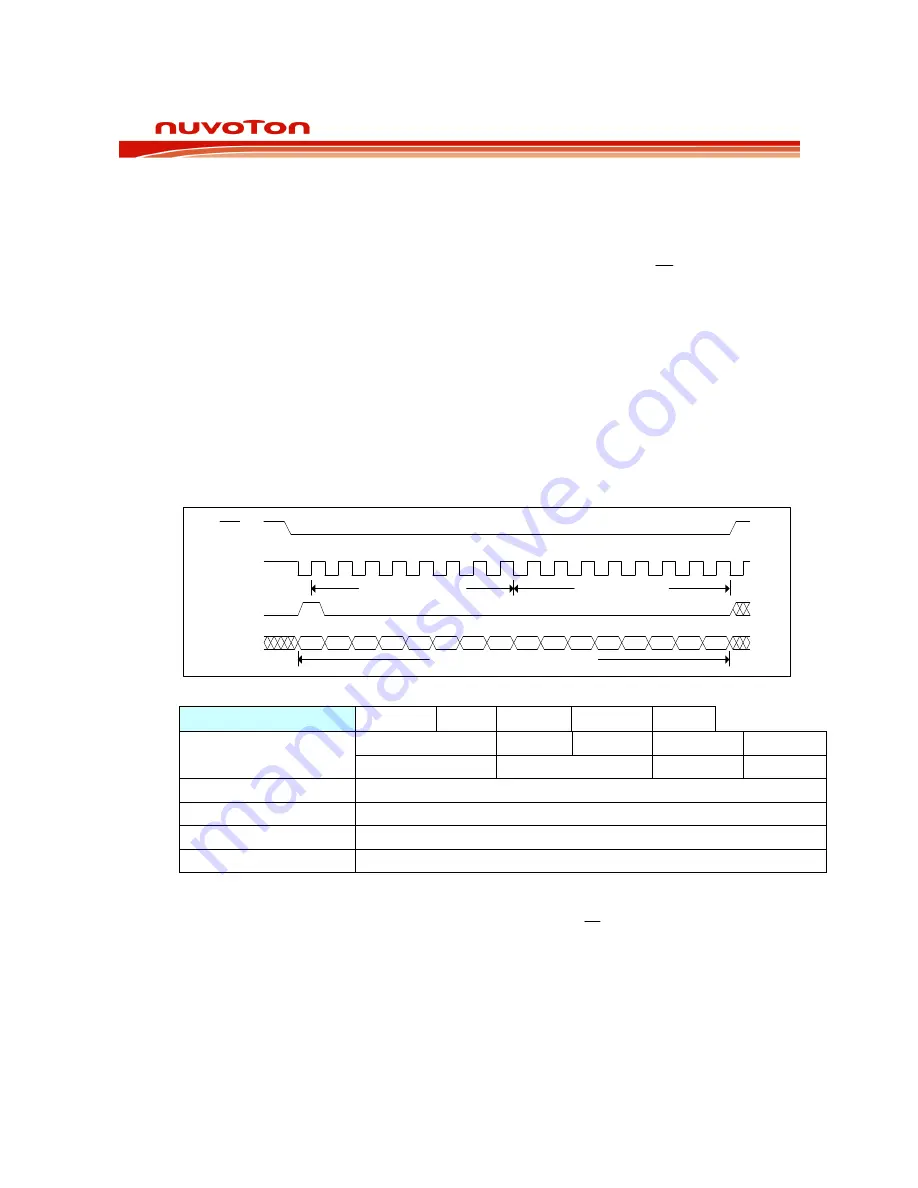
PRELIMINARY ISD1700 SERIES
Publication Release Date: Nov 6, 2008
- 41 -
Revision 1.31
Before starting to write the program code, one has to fully understand the definition of each command
and how to implement each of them correctly. If not, you may end up to spend lots of time and efforts
in debugging the program code. The following several sections illustrate exactly how the
communication sequence of each SPI command should be. Bear in mind that the first bit of each input
data byte shifting into the MOSI must be LSB, whereas the first bit of data byte coming out from the
MISO is LSB. Also, care must be provided to fulfill the initial conditions on the
SS
, SCLK and MOSI
inputs (as shown in Section 10.2). If wrong format is sent, then the device may not response at all or
may respond strangely. Also, not every command will generate an interrupt feedback signal to the
host in responding to the operation requested. Thus, precautions must be well considered to ensure
that the device is ready to accept a new instruction. Otherwise, the instruction sent will be ignored.
11.1 SPI
P
RIORITY
C
OMMANDS
This class of SPI commands will always be accepted by the ISD1700. They control power up and
down of the device, interrogating the status of the device and clearing interrupt requests.
11.1.1 PU (0x01) Power Up
B0 B1 B2 B3 B4 B5 B6 B7 B8 B9 B10 B11 B12 B13 B14 B15
SCLK
MOSI
MISO
SS
Data Byte 1
Command (01h)
LSB
MSB
0
1
2
3
4
5
6
7
8
9
10
11
12
13
14
15
LSB
MSB
Status Register 0 : Bytes #1 & #2
PU
Opcode: 0x01 0x00
Interrupt: No
Byte Sequence:
MOSI
0x01
0x00
MISO SR0
Description: Power
up
State before Execution
Power Down
State after Execution
Idle/FT
Registers Affected
SR0: PU bit, SR1: RDY bit
This command wakes up the ISD1700 device and enables it into the idle state. Upon
executing this command, PU bit of SR0 and RDY bit of SR1 are set to 1. This command does
not generate an interrupt. Once in SPI mode, the input from
FT
pin is ignored and its function
is replaced by Bit 6 of the APC register. SPI mode is exited via a PD (power down)
command.
















































